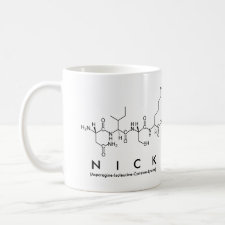
Authors: Piletska EV, Turner NW, Turner APF, Piletsky SA
Article Title: Controlled release of the herbicide simazine from computationally designed molecularly imprinted polymers.
Publication date: 2005
Journal: Journal of Controlled Release
Volume: 108
Issue: (1)
Page numbers: 132-139.
DOI: 10.1016/j.jconrel.2005.07.016
Alternative URL: http://hdl.handle.net/1826/2774
Abstract: The present study describes the development of materials suitable for environmental control of algae. Molecularly imprinted polymers (MIPs) were used as simazine carriers able to provide the controlled release of simazine into water. Three polymers were designed using computational modelling. The selection of methacrylic acid (MA) and hydroxyethyl methacrylate (HEM) as functional monomers was based on results obtained using the Leapfrog(TM) algorithm. A cross-linked polymer made without functional monomers was also prepared and tested as a control. The release of simazine from all three polymers was studied. It was shown that the presence of functional monomers is important for polymer affinity and for controlled release of herbicide. The speed of release of herbicide correlated with the calculated binding characteristics. The high-affinity MA-based polymer released ~ 2% and the low-affinity HEM-based polymer released ~ 27% of the template over 25 days. The kinetics of simazine release from HEM-based polymer show that total saturation of an aqueous environment could be achieved over a period of 3 weeks and this corresponds to the maximal simazine solubility in water. The possible use of these types of polymers in the field of controlled release is discussed
Template and target information: simazine
Author keywords: molecular imprinting, Computational modelling, Simazine, herbicide, controlled release



Join the Society for Molecular Imprinting

New items RSS feed
Sign-up for e-mail updates:
Choose between receiving an occasional newsletter or more frequent e-mail alerts.
Click here to go to the sign-up page.
Is your name elemental or peptidic? Enter your name and find out by clicking either of the buttons below!
Other products you may like:
 MIPdatabase
MIPdatabase









